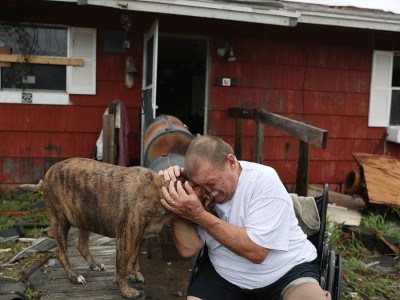Genital human papillomavirus (also called HPV) is the most common sexually transmitted infection (STI). There are more than 40 HPV types that can infect the genital areas of males and females. These HPV types can also infect the mouth and throat. Most people who become infected with HPV do not even know they have it.
HPV is not the same as herpes or HIV (the virus that causes AIDS). These are all viruses that can be passed on during sex, but they cause different symptoms and health problems.
What are the signs, symptoms and potential health problems of HPV?
Most people with HPV do not develop symptoms or health problems from it. In 90% of cases, the body’s immune system clears HPV naturally within two years. But, sometimes, HPV infections are not cleared and can cause:
* Genital warts
* Rarely, warts in the throat — a condition called recurrent respiratory papillomatosis, or RRP. When this occurs in children it is called juvenile-onset RRP (JORRP).
* Cervical cancer and other, less common but serious cancers, including cancers of the vulva, vagina, penis, anus, and oropharynx (back of throat including base of tongue and tonsils).
The types of HPV that can cause genital warts are not the same as the types that can cause cancers. There is no way to know which people who get HPV will go on to develop cancer or other health problems.
Signs and symptoms of HPV-related problems:
Genital warts usually appear as a small bump or group of bumps in the genital area. They can be small or large, raised or flat, or shaped like a cauliflower. Health care providers can diagnose warts by looking at the genital area during an office visit. Warts can appear within weeks or months after sexual contact with an infected partner—even if the infected partner has no signs of genital warts. If left untreated, genital warts might go away, remain unchanged, or increase in size or number. They will not turn into cancer.
Cervical cancer usually does not have symptoms until it is quite advanced. For this reason, it is important for women to get regular screening for cervical cancer. Screening tests can find early signs of disease so that problems can be treated early, before they ever turn into cancer.
Other HPV-related cancers might not have signs or symptoms until they are advanced and hard to treat. These include cancers of the vulva, vagina, penis, anus, and oropharynx (back of throat including base of tongue and tonsils). For signs and symptoms of these cancers, see www.cancer.govExternal Web Site Icon.
RRP is a condition in which warts grow in the throat. These growths can sometimes block the airway, causing a hoarse voice or troubled breathing.
How do people get HPV?
HPV is passed on through genital contact, most often during vaginal and anal sex. HPV may also be passed on during oral sex and genital-to-genital contact. HPV can be passed on between straight and same-sex partners—even when the infected partner has no signs or symptoms.
A person can have HPV even if years have passed since he or she had sexual contact with an infected person. Most infected persons do not realize they are infected or that they are passing the virus on to a sex partner. It is also possible to get more than one type of HPV.
Rarely, a pregnant woman with genital HPV can pass HPV to her baby during delivery. Very rarely, the child can develop juvenile-onset recurrent respiratory papillomatosis (JORRP).
How does HPV cause genital warts and cancer?
HPV can cause normal cells on infected skin to turn abnormal. Most of the time, you cannot see or feel these cell changes. In most cases, the body fights off HPV naturally and the infected cells then go back to normal. But in cases when the body does not fight off HPV, HPV can cause visible changes in the form of genital warts or cancer. Warts can appear within weeks or months after getting HPV. Cancer often takes years to develop after getting HPV.
How common are HPV and related diseases?
HPV (the virus). Approximately 20 million Americans are currently infected with HPV. Another 6 million people become newly infected each year. HPV is so common that at least 50% of sexually active men and women get it at some point in their lives.
Genital warts. About 1% of sexually active adults in the U.S. have genital warts at any one time.
Cervical cancer. Each year, about 12,000 women get cervical cancer in the U.S. Almost all of these cancers are HPV-associated.
Other cancers that can be caused by HPV are less common than cervical cancer. Each year in the U.S., there are about:
* 1,500 women who get HPV-associated vulvar cancer
* 500 women who get HPV-associated vaginal cancer
* 400 men who get HPV-associated penile cancer
* 2,700 women and 1,500 men who get HPV-associated anal cancer
* 1,500 women and 5,600 men who get HPV-associated oropharyngeal cancers (cancers of the back of throat including base of tongue and tonsils) [Note: Many of these cancers may also be related to tobacco and alcohol use.]
Certain populations are at higher risk for some HPV-related health problems. This includes gay and bisexual men, and people with weak immune systems (including those who have HIV/AIDS).
RRP is very rare. It is estimated that less than 2,000 children get juvenile-onset RRP every year in the U.S.
How can people prevent HPV?
There are several ways that people can lower their chances of getting HPV:
* Vaccines can protect males and females against some of the most common types of HPV that can lead to disease and cancer. These vaccines are given in three shots. It is important to get all three doses to get the best protection. The vaccines are most effective when given at 11 or 12 years of age.
o Girls and women: Two vaccines (Cervarix and Gardasil) are available to protect females against the types of HPV that cause most cervical cancers. One of these vaccines (Gardasil) also protects against most genital warts. Gardasil has also been shown to protect against anal, vaginal and vulvar cancers. Either vaccine is recommended for 11 and 12 year-old girls, and for females 13 through 26 years of age, who did not get any or all of the shots when they were younger. These vaccines can also be given to girls beginning at 9 years of age. It is recommended to get the same vaccine brand for all three doses, whenever possible.
o Boys and men: One available vaccine (Gardasil) protects males against most genital warts and anal cancers. This vaccine is available for boys and men, 9 through 26 years of age.
* For those who choose to be sexually active, condoms may lower the risk of HPV. To be most effective, they should be used with every sex act, from start to finish. Condoms may also lower the risk of developing HPV-related diseases, such as genital warts and cervical cancer. But HPV can infect areas that are not covered by a condom – so condoms may not fully protect against HPV.
* People can also lower their chances of getting HPV by being in a faithful relationship with one partner; limiting their number of sex partners; and choosing a partner who has had no or few prior sex partners. But even people with only one lifetime sex partner can get HPV. And it may not be possible to determine if a partner who has been sexually active in the past is currently infected. That’s why the only sure way to prevent HPV is to avoid all sexual activity.
CDC’s National Breast and Cervical Cancer Early Detection Program
CDC-INFO Contact Center
1-800-CDC-INFO (1-800-232-4636)
TTY: (888) 232-6348
Email: cdcinfo@cdc.gov
Source:Centers for Disease Control and National Prevention






When exposed to HPV, a woman’s immune system typically prevents the virus from doing harm. In a small group of women, however, the virus survives for years, contributing to the process that causes some cells on the surface of the cervix to become cancer cells. “.”-
Take a peek at our very own internet page as well http://healthmedicinebook.com/index.php